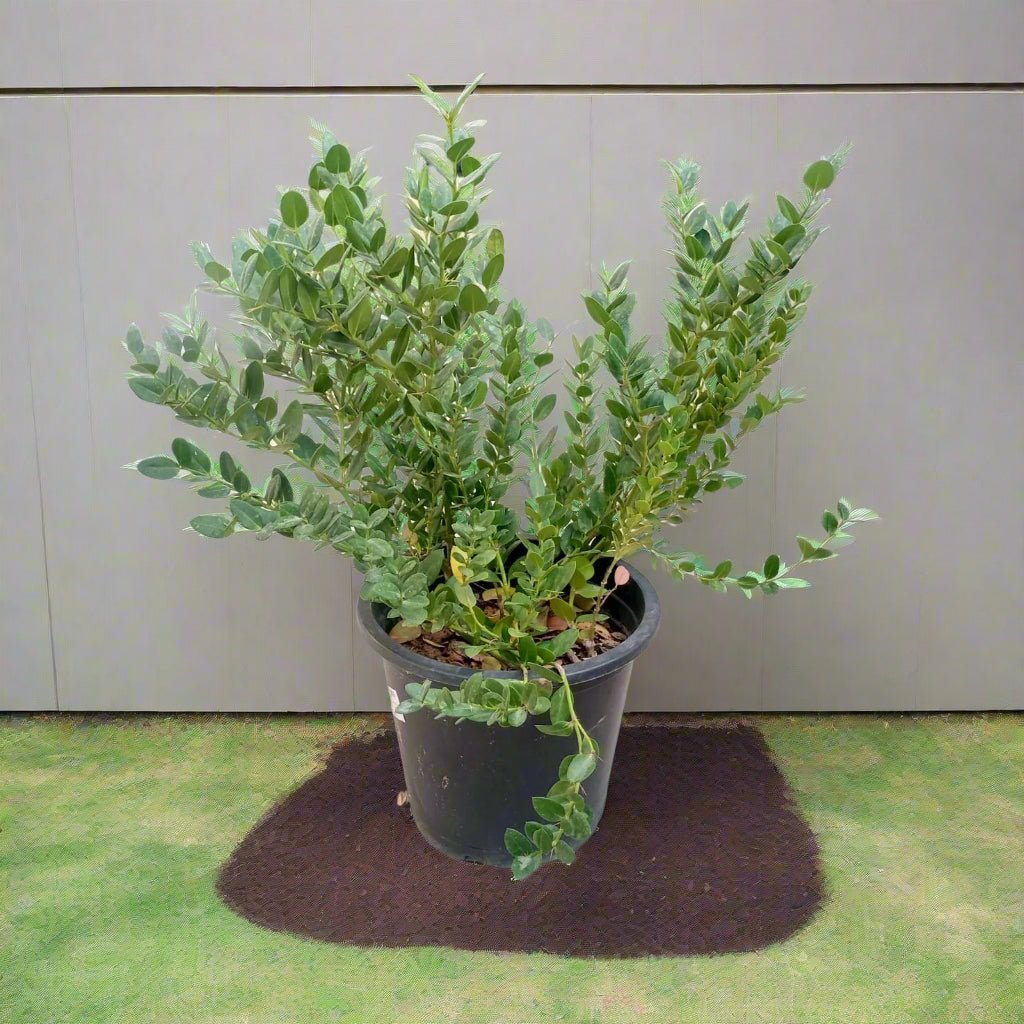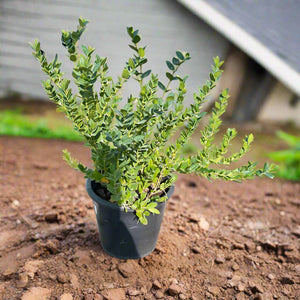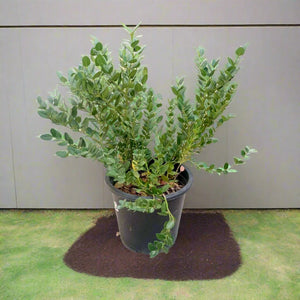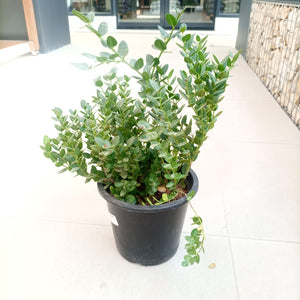Ground Cover Carissa Grandiflora | 40 - 50cm
Guarantee Safe Checkout
Website Exclusive - Free Delivery in Dubai & Sharjah
Free replacement if you receive a defective item during delivery
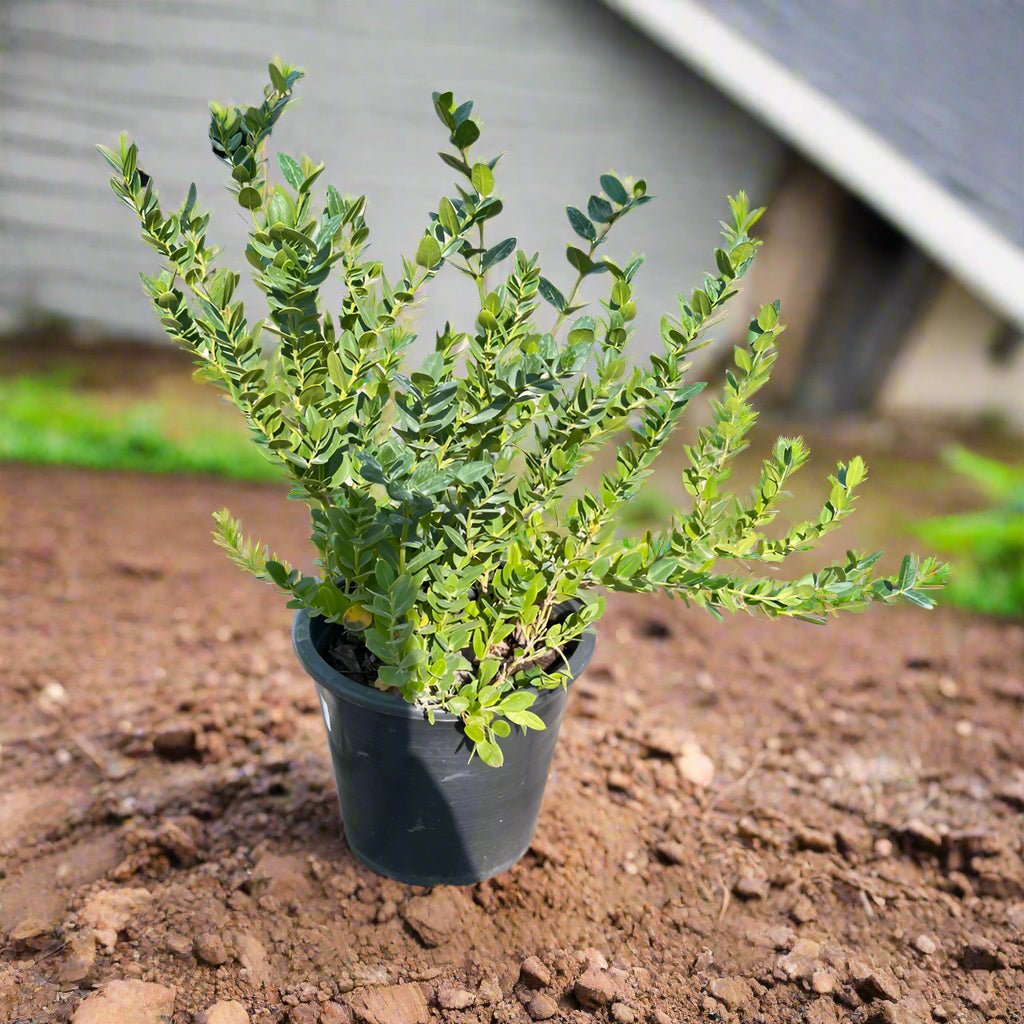
Ground Cover Carissa Grandiflora | 40 - 50cm
Ground Cover Carissa Grandiflora 5LP, 40-50cm
Carissa grandiflora, commonly known as the Natal plum or Big Flowered Carissa, is a species of flowering plant in the family Apocynaceae, native to South Africa. It is a versatile shrub or small tree that is widely grown for its ornamental and edible qualities. The plant is known for its fragrant flowers, attractive foliage, and delicious fruit.
Here are key details about Carissa grandiflora:
1. Appearance:
Size: Carissa grandiflora can grow as a shrub or small tree, typically reaching a height of 6–10 feet (1.8–3 meters), though it can be pruned to maintain a smaller size.
Leaves: The plant has glossy, dark green, leathery leaves that are elliptical in shape.
Flowers: It produces large, fragrant, white to pale pink star-shaped flowers with five petals, typically in clusters.
Fruit: The plant bears small, round, red to purple fruit (similar to plums), which are edible when fully ripe. The fruit is sweet-tasting with a slightly tangy flavor and contains seeds.
2. Uses:
Culinary: The fruit is edible and can be eaten raw, or it can be used in making jams, jellies, and sauces. The flavor of the ripe fruit is sweet, with a hint of tartness.
Ornamental: The plant is popular in landscaping due to its attractive flowers, compact growth, and edible fruit.
Medicinal: While not widely used in formal medicine, traditional uses in some cultures include using parts of the plant for minor ailments such as skin infections or digestive issues.
3. Cultivation:
Climate: Carissa grandiflora thrives in warm, subtropical to tropical climates but can also grow in some temperate regions with the right care. It is drought-tolerant once established and can tolerate coastal conditions, making it ideal for landscaping in coastal areas.
Soil: It prefers well-drained soil and can tolerate a range of soil types, from sandy to loamy.
Sunlight: The plant requires full sun to produce optimal flowers and fruit.
Watering: It is relatively drought-tolerant but benefits from regular watering during dry spells, especially when young.
4. Other Characteristics:
Thorns: The plant has sharp thorns on its branches, which can be a deterrent for some gardeners. These thorns help protect the plant from browsing animals.
Toxicity: While the fruit is edible, the seeds contain compounds that can be toxic if consumed in large quantities. However, the fruit is safe to eat in moderation.
